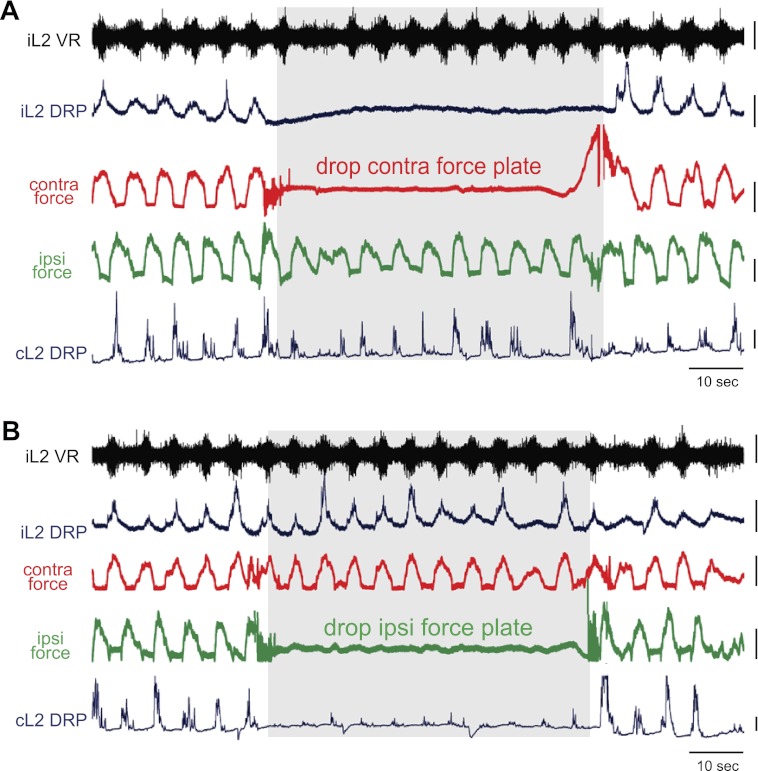Fig. 6.
Response to contralateral and ipsilateral plate removals. Ipsilateral and contralateral DRPs shown with ipsilateral ventral root activity, contralateral force (red), and ipsilateral force (green). Gray boxes highlight the period of contralateral (A) and then ipsilateral (B) plate removals. Note that there was not a significant change in locomotor frequency before, during, or after plate removal. A: when the contralateral plate was removed, reducing contralateral limb loading, the ipsilateral L2 DRP was nearly abolished. The DRPs returned as soon as the contralateral plate was restored. This result demonstrates that sufficient contralateral limb loading is required to generate the large DRPs typically seen during nonfictive locomotion. The contralateral L2 DRP was largely unaffected by the plate removal, as its opposite force remained. B: when the ipsilateral plate was removed, the contralateral DRP was greatly reduced while the ipsilateral DRP was largely unchanged. Note that small contralateral DRPs remained, which were likely centrally generated as in fictive locomotor literature or generated by residual ipsilateral and/or contralateral input. Yet, the largest contralateral force-sensitive component of the DRP required significant contralateral force. Scale bars are 10 mN, 200 μV, and 10 s.

